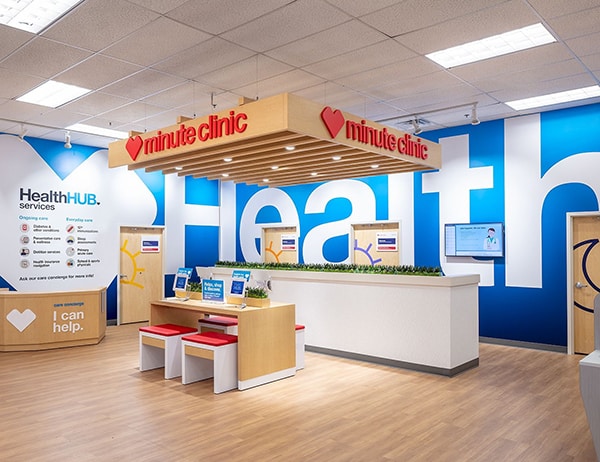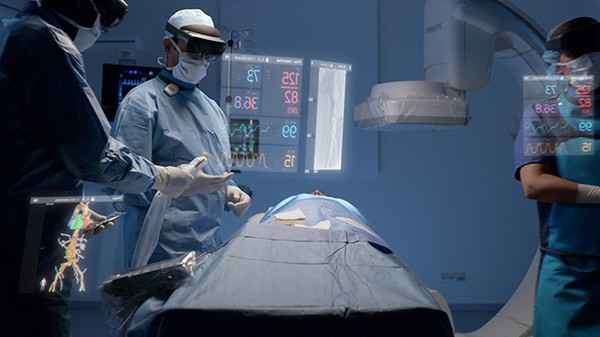EMERGING HEALTHCARE INDUSTRY TRENDS #5: Physician Empowerment
Over the past few weeks, we have explored the emerging healthcare industry trends from the Shifting Point of Care to the rapidly emerging trend of Patient Empowerment. This week’s blog looks at physician empowerment by increasing electronic health record adaptation, better availability of big data, advances in AI and machine learning, 5G rollout, and the COVID-19 health crisis.
Like the rest of the world, the healthcare industry has faced many changes and hurdles over the past year. The COVID-19 health crisis has shifted everything from how care is given in a medical practice to expectations for that care from both patients and physicians alike. As the healthcare landscape continues to undergo these rapid changes, we are bringing you a look at what to expect this year and into the next with the emerging trend of physician empowerment.
What is Physician Empowerment?
Physicians have a lot on their shoulders: a physical and mental load that’s fueled by the growing number of chronic diseases, understaffing, and mountains of administrative tasks. All of these factors are leading to physician burnout at record-high levels.
But as doctors raise these concerns, digital tools have emerged, empowering them to focus on doing what they’ve been trained to do, rather than with what they’ve historically been saddled.
Examinations, therapies, and treatments are migrating outside of the hospital and into new spaces facilitated by shifting laws and regulations, and an increasing focus on wellness and well-being. Patients can now receive care in a broader range of settings, including in their own homes.
The key drivers of this trend are:
– Patient Empowerment: Check out our previous trend blog, where we discussed the factors leading to increased patient empowerment.
– Electronic health record adoption: As healthcare systems adopt electronic health records, physicians have better access to health records, enabling them to get a faster, more accurate picture of their patients’ histories.
– Availability of big data: Big data analytics in healthcare offer physicians access to an enormous amount of information, leading to better-informed decisions, especially when presented in an easily digestible format.
– Advances in machine learning and AI: As predictive models continue to become more widely available, they will inform how physicians diagnose patients and help them hone their skills in the OR.
– COVID-19 accelerated adoption: The pandemic has accelerated many healthcare trends that were already on the rise, like virtual care.
– 5G rollout: As 5G continues to spread across the country, rural areas will have access to the internet that has previously been impossible or too slow to handle telemedicine.
Why Physician Empowerment Matters
To date, health tech has primarily focused on empowering patients. But recent advancements in the medical profession are creating a paradigm shift in healthcare that has moved physician practice from their “ivory tower” back into the clinic, as well as to new virtual spaces. As tech changes the healthcare landscape, physicians must elevate their digital savviness, and commit to personal growth by beginning to adopt new workscapes and workflows.
Physician Empowerment Opportunity: Better surgeons and increased access to care with advanced collaboration
As robotics, predictive AI, augmented reality, and 5G broadband expand and explode across the country, physicians are now empowered to collaborate with experts in real-time in ways that we could only have ever imagined before. Fueled by this expansion, the robotic surgery market is projected to reach $7 billion by 2025 — a 15% CAGR. As these tools transform the surgical theater, an array of resources is helping surgeons better their skills and operations through technique familiarization intra-op and enable collaboration with other surgeons to perfect their procedures.
One of the technologies leading this boom is augmented reality surgery company Proximie, whose web-based platform enables remote collaboration via video, audio, and AR. Proximie is already in a third of all NHS hospitals in the UK and assists front-line field hospitals and Royal Navy ships around the world.
Tele-robotics enabling remote procedures have not previously been in widespread use in healthcare organizations; however, with the rise of 5G technology, issues of the past like Internet reliability, bandwidth, speed, and security are rapidly falling away. In 2019, a Chinese surgeon performed the first robotic surgery using 5G, while in the United States, Rush University announced a partnership with AT&T to become the first hospital run entirely on 5G.
Opportunity: Faster care for patients with better data application & insight
Healthcare technology is advancing fast — in many cases, overwhelmingly fast. Doctors have been drowning in all this newfound data, and without a way to quickly and comprehensively access the data at their disposal, physicians aren’t able to harness it for its full potential for improving patient outcomes. But as deep learning and AI make strides to filter the data and identify correlations, doctors can find and interpret the data points they need to make better medical decisions. And luckily, this sector of the market is growing fast: the need for medical visualization and advanced imaging is expected to be worth more than $3.19 billion by 2021.
For example, when applied to CT images at a major East Coast medical center, machine learning reduced lengths of stay by three-quarters of a day and reduced the time spent in the ED by 59 minutes. A similar study found that the ER turnaround time of CT scans for intracranial hemorrhages from 53 minutes to 46 minutes. Innovative radiology startup Aidoc employs a deep learning algorithm to flag patients’ images in the ED radiology queue, drawing on knowledge from millions of records to accurately identify a growing embolism. Instead of sifting through scans chronologically, physicians can find the right images at the top and more quickly rush the patient to critical care.
Data visualization dashboards also help clinicians analyze and interpret large sets of data more quickly, saving time and lives. In one case study, there was a 65% reduction in the time spent on data analysis after implementing a dashboard, with further gains projected for the future. Employing a range of interactive features like motion graphics, these dashboards present data in a digestible way that doesn’t overwhelm the user, lowering the cognitive load.
Opportunity: Improved patient outcomes with advanced robotic assistance
Robotics has advanced tremendously in the past few years, and these improvements will only continue. Today, among other innovations, robots can use data-driven insights to provide proactive clinical suggestions for treatment. Employing a wellspring of knowledge from past cases, surgeons can use the new generation of robotics to respond to potential issues as they arise, create more specific plans based on anatomy, and help surgeons make better decisions intra-op to improve the outcomes.
Medtronic, a leader in this space, partnered with Digital Surgery to use AI and machine learning to help reduce the variability and cost of surgery. A clinical decision tool helps inform case scheduling and decision-making using quantitative modeling.
Advanced robotics also offers medical educations tools for evaluating a surgeons’ performances more objectively. Deep learning algorithms can now be harnessed to assess a surgeon’s completion time, path length, depth perception, speed, smoothness, and curvature, allowing AI to classify surgeons’ expertise on a spectrum from novice to expert. This can help pair surgeons better hone their skills and reduce case times and liability while improving patient care.
Let THRIVE Help You Keep a Pulse on the latest Healthcare Industry Trends
Keeping up to date with trends like physician empowerment is important for long-term success in the healthcare technology industry. The landscape is changing quickly, and our series of trend blogs will be exploring each of these new technologies within medical practice and how they are shaping the healthcare ecosystem.
THRIVE is an expert healthcare technology consultant with years of proven experience in the industry. We’d love to talk more about how we can help you respond to the shifting trends so that you can protect your business now and into the future. Contact THRIVE today.
RELATED POSTS
If you missed any of the previous posts in this blog series on the future trajectory of healthcare, you can find them here:
Week 1: The Shifting Point of Care
Week 2: The Hyper Personalization of Care
Week 3: Expanding the Continuum of Care
Week 4: Patient Empowerment
Week 6: Orchestrating Operating Room Efficiency
Week 7: Human-centered Healthcare Design
Week 8: Improving Medical Device UX Design
Week 9: Improving Contextual Design & Cognitive Empathy
Week 10: Enhanced Data Visualization Tools
Week 11: The Increasing Prevalence of Robot-Assisted Surgery
Week 12: Behavioral Design for Medical
Week 13: Humanized Patient-Provider Interactions








